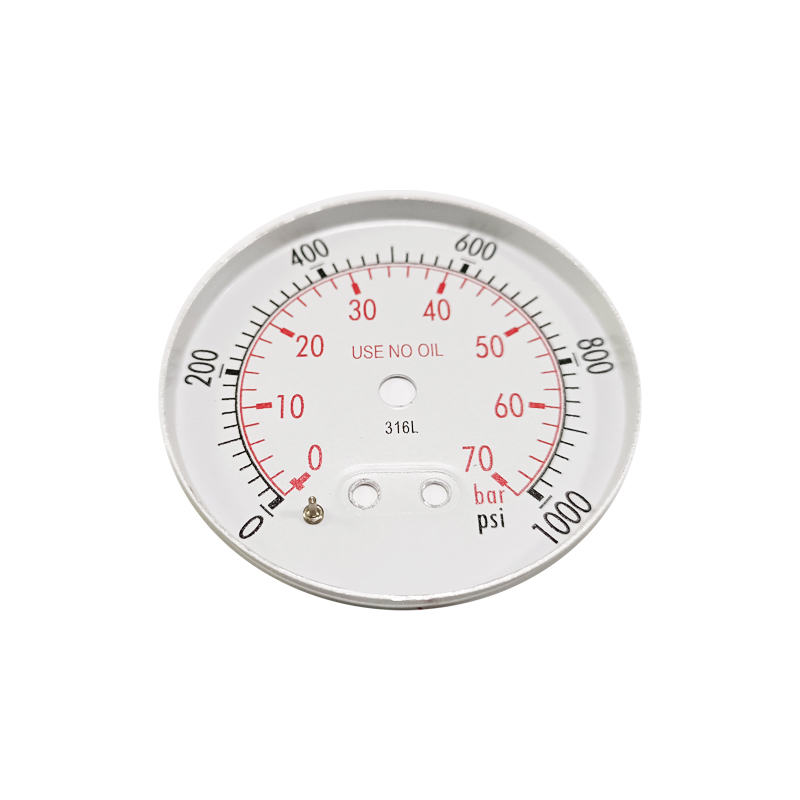
Aug . 01, 2024 02:06 Back to list
Global Suppliers of Diaphragm Vacuum Pressure Gauges for Industrial Applications and Equipment
Understanding Diaphragm Vacuum Pressure Gauges Key Features and Market Exporters
In the realm of industrial measurement and control systems, diaphragm vacuum pressure gauges have become essential tools for monitoring vacuum levels in various applications. These instruments are crucial in sectors such as pharmaceuticals, food processing, chemical manufacturing, and other industries where precise vacuum measurements are critical. This article explores the functionality and significance of diaphragm vacuum pressure gauges, while also highlighting key exporters in this market.
What is a Diaphragm Vacuum Pressure Gauge?
A diaphragm vacuum pressure gauge is a device designed to measure the pressure below atmospheric pressure, typically in vacuum systems. The fundamental operating principle is based on a flexible diaphragm that moves in response to changes in pressure. When the pressure inside a chamber drops, the diaphragm deflects, providing a mechanical movement that is translated into a readable measurement on a dial or digital display.
These gauges can measure pressures down to very low levels, making them ideal for applications where maintaining a specific vacuum condition is crucial. Notably, diaphragm gauges often feature high sensitivity and reliability, with minimal response time. This makes them essential in processes where fluctuations in pressure can affect quality or safety.
Key Applications of Diaphragm Vacuum Pressure Gauges
Diaphragm vacuum pressure gauges find applications in several industries
1. Pharmaceuticals In the pharmaceutical industry, maintaining a precise vacuum is necessary for processes like freeze-drying and drug packaging. Diaphragm gauges help monitor and control vacuum levels, ensuring product quality and compliance with industry standards.
3. Chemical Manufacturing Various chemical processes require precise pressure control. Diaphragm pressure gauges help in monitoring reactors and other equipment to maintain optimal operating conditions.
diaphragm vacuum pressure gauge exporter

4. HVAC Systems In heating, ventilation, and air conditioning systems, vacuum pressure gauges are used to ensure that systems are properly evacuated before charging with refrigerants.
Importance of Exporters in the Diaphragm Vacuum Pressure Gauge Market
The global demand for diaphragm vacuum pressure gauges has led to a competitive market for exporters. Companies that specialize in manufacturing and exporting these gauges play a pivotal role in ensuring that high-quality, reliable measurement solutions are available worldwide.
Key features sought after by buyers include accuracy, durability, ease of installation, and the capability to withstand harsh industrial environments. Exporters from countries known for their engineering excellence, such as Germany, Japan, and the United States, often lead the market, offering innovative products that cater to diverse industrial needs.
Investing in advanced manufacturing technologies and adhering to international quality standards are crucial strategies for these exporters. Additionally, providing excellent customer service and technical support can significantly impact their competitiveness in the market.
Future Trends and Challenges
As industries continue to evolve, particularly with the integration of smart technologies and IoT, diaphragm vacuum pressure gauges are also adapting. There is a growing trend towards digitalization, with many gauges now featuring smart capabilities that allow for remote monitoring and data analysis. This trend not only enhances the usability of these devices but also significantly improves process efficiency.
However, exporters also face challenges such as global supply chain fluctuations and increasing competition from emerging markets. To remain competitive, it is essential for exporters to innovate continuously and adapt to changing market demands.
Conclusion
Diaphragm vacuum pressure gauges are vital instruments across various industries, providing precise measurements that ensure quality and safety. As the market grows, so does the role of exporters in supplying reliable and innovative solutions. With the ongoing advancements in technology and the increasing need for efficiency, the future of diaphragm vacuum pressure gauges holds promising potential for both manufacturers and their clients.
-
Fluke Differential Pressure Gauges Precision Instruments for Industrial Use
NewsMay.25,2025
-
WIKA Differential Pressure Gauge 700.01 - High Accuracy & Durable Design
NewsMay.25,2025
-
Diaphragm Pressure Gauges High-Accuracy & Durable Solutions
NewsMay.25,2025
-
High-Accuracy Differential Pressure Gauge Diaphragms OEM Factories & Services
NewsMay.24,2025
-
Water Fire Extinguisher Pressure Gauge Durable Supplier Solutions
NewsMay.24,2025
-
Handheld Digital Differential Pressure Gauge Portable, High-Accuracy & Real-Time Data
NewsMay.24,2025
